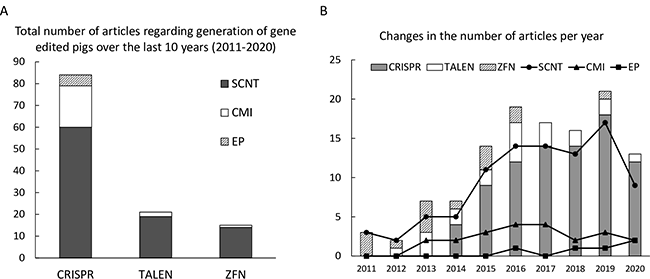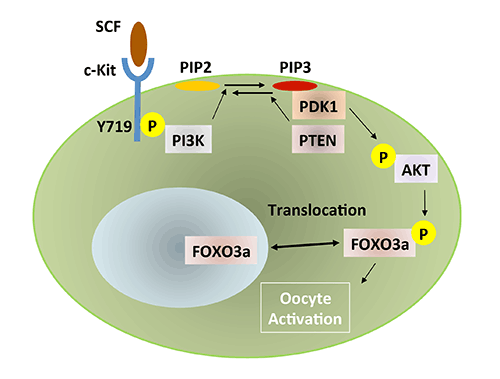- |<
- <
- 1
- >
- >|
-
Article type: SRD Outstanding Research Award 2020
2021Volume 67Issue 3 Pages 161-165
Published: 2021
Released on J-STAGE: June 21, 2021
Advance online publication: April 27, 2021Download PDF (1086K)
-
Article type: SRD Innovative Technology Award 2018
2021Volume 67Issue 3 Pages 167-175
Published: 2021
Released on J-STAGE: June 21, 2021
Advance online publication: March 02, 2021Download PDF (1970K)
-
Article type: Review
2021Volume 67Issue 3 Pages 177-187
Published: 2021
Released on J-STAGE: June 21, 2021
Advance online publication: April 10, 2021Download PDF (1086K) -
 Article type: Review
Article type: Review
2021Volume 67Issue 3 Pages 189-195
Published: 2021
Released on J-STAGE: June 21, 2021
Advance online publication: April 25, 2021Editor's pickCover Story:
In mammalian female reproduction, primordial follicles serve as stores to sustain the ovulation cycle. Regulations of primordial follicle development, activation, and dormancy in mice are summarized in a review by Nagamatsu (pp. 189–195). The importance of mechanical stress, especially extracellular matrix (ECM)-mediated pressure, for the maintenance of primordial follicle dormancy was recently demonstrated. Primordial follicles treated with collagenase, trypsin, and knockout serum replacement (KSR) (this mixture called CTK) to digest ECM were examined by immunohistochemistry. Ovaries treated solely with phosphate-buffered saline displayed primordial follicles composed of flat granulosa cells and complex stress fibers, as revealed by phalloidin. In contrast, CTK treatment resulted in fewer stress fibers and cuboidal-shaped granulosa cells, suggesting oocyte activation.Download PDF (1763K)
-
Article type: Original Article
2021Volume 67Issue 3 Pages 197-205
Published: 2021
Released on J-STAGE: June 21, 2021
Advance online publication: March 20, 2021Download PDF (2174K) -
Article type: Original Article
2021Volume 67Issue 3 Pages 207-215
Published: 2021
Released on J-STAGE: June 21, 2021
Advance online publication: March 21, 2021Download PDF (2103K) -
Article type: Original Article
2021Volume 67Issue 3 Pages 217-221
Published: 2021
Released on J-STAGE: June 21, 2021
Advance online publication: April 10, 2021Download PDF (956K) -
Transcription factor OTX2 silences the expression of cleavage embryo genes and transposable elementsArticle type: Original Article
2021Volume 67Issue 3 Pages 223-228
Published: 2021
Released on J-STAGE: June 21, 2021
Advance online publication: April 25, 2021Download PDF (2758K)
-
Article type: Technology Report
2021Volume 67Issue 3 Pages 229-234
Published: 2021
Released on J-STAGE: June 21, 2021
Advance online publication: March 13, 2021Download PDF (2238K) -
Article type: Technology Report
2021Volume 67Issue 3 Pages 235-239
Published: 2021
Released on J-STAGE: June 21, 2021
Advance online publication: April 14, 2021Download PDF (2414K)
- |<
- <
- 1
- >
- >|









